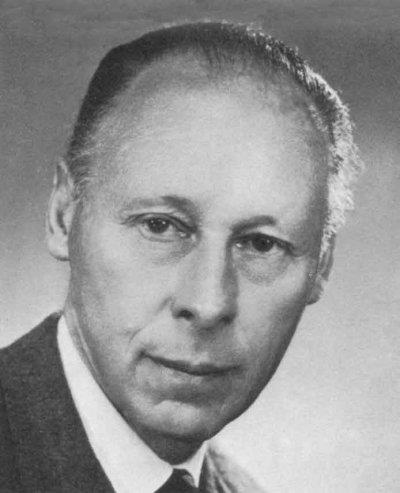B
In 1927 while a student at the Technical University in Berlin-Charlottenburg, he began experimental work with the objective of finding a hydrofoil solution to the seakeeping problems of the flying boat. During the next eight years, the Baron built and tested seven experimental boats. He evaluated a number of foil configurations including both surface piercing and submerged foil concepts. By 1935 he had a working submerged foil test craft but was disappointed with his mechanical depth control device. Recognizing that the development of a satisfactory working depth sensor would require more time, he turned his efforts to the surface piercing system.
His seventh test craft had a V-shaped front foil and an aft foil with trapezoid outer portions. This craft performed fully satisfactory on the Rhine River and was demonstrated on a round trip from Mainz to Cologne -- a distance of 370 km. As a result the Koln-Dusseldorfer Shipline placed an order for a passenger hydrofoil. This was the first order for a commercial hydrofoil. The order was placed with the Sachsenburg Shipyard and represented the beginning of the Schertel-Sachsenburg relationship.
Before starting the commercial order, Schertel and Sachsenburg decided to build a larger test craft. This test craft was the 17-ton, 47-knot VS-6. After a demonstration to the Navy, it was commissioned as an ambulance transporter. By this time World War II has broken out and the Schertel-Sachsenburg effort was directed to-supporting the German war effort. The Koln-Dusseldorfer order never materialized. During World War II, a number of hydrofoils were built using the Schertel-Sachsenburg system.

